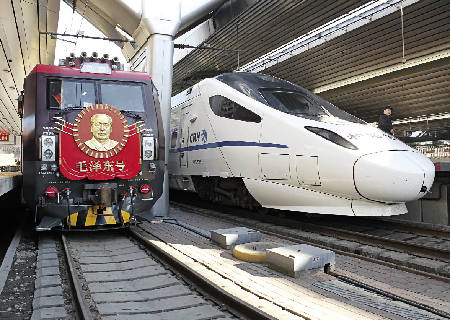China’s Railroad Story

A locomotive named after late Chinese leader Mao Zedong, and a high-speed train come to a halt at Beijing Railway Station.
At their early stage, China’s railways were British built. In 1865, British businessmen constructed in Beijing a 500-meter-long track on which a small steam locomotive ran. However, it was more decorative than functional. Eleven years later, a British company constructed the Wusong-Shanghai Railway to transport both passengers and goods.
The rail line between Gaobeidian and Yixian County in Hebei Province is deemed China’s first self-constructed railway. Its purpose was to provide convenience for the Qing Dynasty (1644-1911) royal family in their making of ritual sacrifices to their ancestors. Chinese engineer Zhan Tianyou (1861-1919), who studied in the U.S., was appointed in 1903 to design a line leading to the Western Imperial Tombs situated in Yixian County.
Between 1949, when the People’s Republic of China was established, and the end of 2015, the total length of the country’s operating rail network increased from 10,000 kilometers to more than 110,000 kilometers. That of high speed rail now exceeds 18,000 kilometers. Trains, particularly high-speed trains, have become the first choice for Chinese people making long journeys.
Meanwhile, the possibility of China’s investing in British high-speed railways has recently been a frequent topic in the U.K., which first introduced the railway to China one and a half centuries ago. It is believed that China’s railway globalization will benefit increasingly more countries worldwide.

